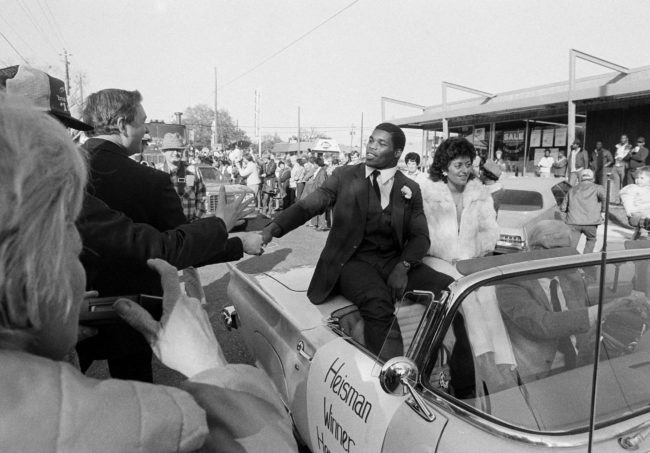Physical descriptions are challenging to write. More accurately, they are challenging to write well. And yet they are standard fare in much of our journalism, especially if we're writing profiles or intimate stories that take readers deeply into other lives. We want readers to see the person at the center of a story, to feel they are in the moment with us as we interview or observe someone.
But the scratch marks that are letters — the foundational tool of writing — can't provide the same distinct visuals as a photograph or video any better than it can replicate the sound of someone's voice. So in our attempts to paint a mental picture for the reader, we often choose the obvious, which soon become cliches. How often have you read a story that mentions the color of someone's hair or eyes — even when those descriptions tell us nothing about the character of a subject or meaning of a story?
Tommy Tomlinson avoided that trap in a recent edition of his newsletter, "The Writing Shed," in an essay about the rarified appeal of Herschel Walker as a football phenom, and how that 40-year-ago stardom still casts a glow — for some — around Walker's bid for a seat in the U.S. Senate. Let me repeat Walker's glow still exists for some. As many and maybe more decry him as a viable candidate — a pawn of today's Republican Party which is using his sports fame to give them one more acquiescent member.
That's the discomforture Tomlinson, who overlapped with Walker at the University of Georgia, wrestled with in his essay: How do we resolve our awe of someone who soars, whether in music or writing or sports, with our disgust for some of their behavior? Or, as Tomlinson put it, "how to separate the artist from the art." I actually winced a bit when I started Tomlinson's piece. I am a faithful reader of "The Writing Shed," one of the best-written and most generous blogs out there. But I did not want to get sucked into yet one more piece about Walker's chances of defeating Democrat Raphael Warnock. (This week's vote for the Georgia Senate seat was so close that it's headed for a run-off in early December.) I certainly didn't want to read a piece that placed Walker on the tallest of Gothic pedestals.
But Tomlinson, as he often does, pulled me in with writing as accessible as it is elegant, as plains-spoken as poetic. His descriptions of Walker as a football player helped me understand the appeal — to some — of the celebrity athlete. That made his argument against Walker as a politician that much stronger.
I doubt I would have gotten to that argument, which was the whole reason, without Tomlinson's descriptions of Walker in his glory days on the field. Those descriptions were as much metaphorical as they were literal. Walker was "a mythical creature in human form." "...uncatchable ..." "Even when he walked, he glided."
And my favorite, early in the piece when Tomlinson retells the tale of how an unmotivated boy who wanted to do little but watch TV built himself into physical marvel as a young man:
"... a slab of muscle with Olympic speed."
That's a description that does far more than offer a dim image of someone. That's a description that has meaning core to the story.



